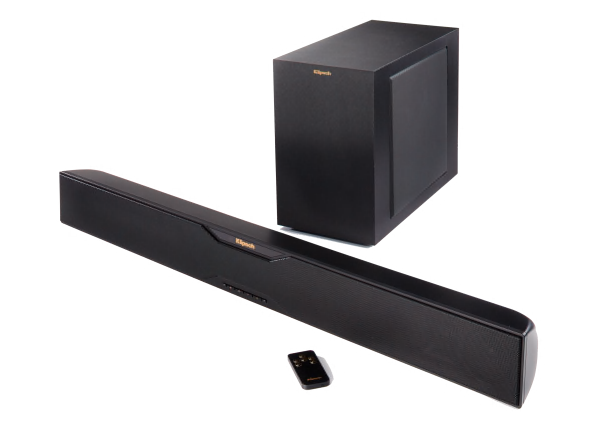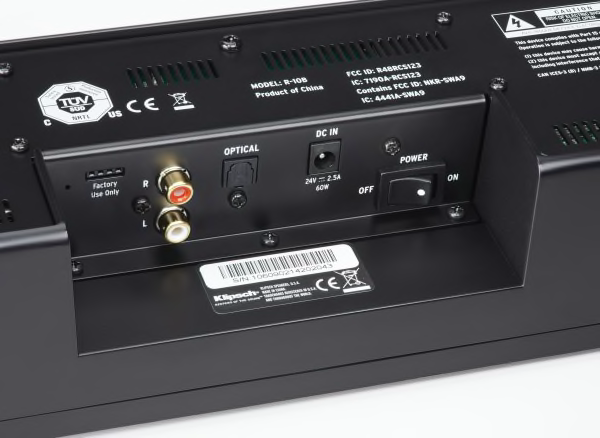Sound quality: Klipsch's Reference R-10 delivers sound quality that falls in the good range - it reproduces music and dialog reasonably well despite the obvious shortcomings in its sound. The bass has good impact and goes fairly deep, but is somewhat boomy. The midrange is somewhat nasal and grainy, and a bit echoey. The treble is extended, but upper treble is prominent and the overall sound is a bit smeared. This model does a so-so job of recovering room ambience--a sense of the acoustic space in which the music was recorded--and lacks treble air and fine detail. The 3D mode degrades the sound--it actually reduces the apparent depth of the soundfield and makes the sound more congested and very constricted. There was no significant difference in sound quality whether we used an optical or Bluetooth connection. While the analog input does not sound significantly different from other types of connections throughout the midrange and treble, the bass is very boosted; reducing the bass level can make it sound like the other inputs. The sound bar can provide satisfying volume in a medium-sized room.
TV setup and ease of use: Good overall. Setup: Programming the soundbar to respond to a TV remote was quick, easy, and straight forward. It comes with optical digital audio cable for TV connection, a stereo analog audio cable must be purchased separately if you want or need it to connect your TV. Ease of Use: If this model has been programmed to respond to a TV remote control volume and mute commands it can work seamlessly with most TVs. If you decide to use the soundbar's remote instead you'll find that it's cluttered with the only distinctive control being the power button. The soundbar console lacks a power button but has an auto on/off feature and has source, volume, and mute controls that are adequately identified and easy to see and access. The console display shows power status, the source indicators consists of unlabeled color coded lights that require the instructions to decode, and there is an indication when the volume is being changed but no level is shown. There is a highly visible muting status indicator and the DSP (digital sound processing) effects mode indicator is either on or off and can easily be seen from arms length.
Features setup and ease of use: Fair overall. Setup: Pairing of a Bluetooth device required a long push of a unmarked multi-function button - easy but not necessarily straight forward. Ease of Use: The remote is cluttered; only the power button stands out. The soundbar console lacks a power button but has an auto on/off feature and has source, volume, and mute controls that are adequately identified and are easy to see and access. The console display shows power status, the source indicators consists of unlabeled color coded lights that require the instructions to decode, there is an indication when the volume is being changed but no level is shown. There is a highly visible muting status indicator, and the DSP effects mode indicator is either on or off and can easily be seen from arms length. If you switch from the Bluetooth source to another source and then back again you have to manually re-connect the Bluetooth source device.


























